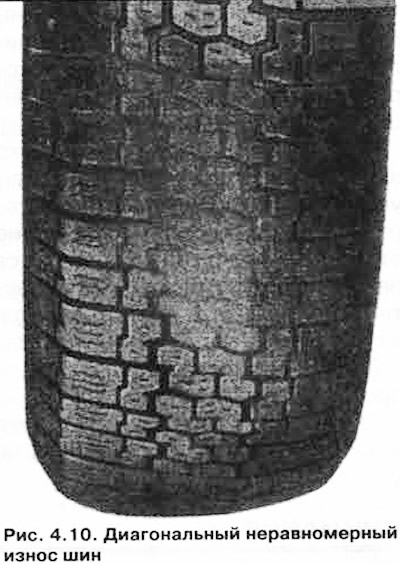Diagonal uneven tire wear
Diagonal patches of uneven wear run at an angle of approximately 45°relative to the direction of the circumference of the tire (pic. 4.10).

Most often, there is one such spot around the entire circumference of the tread, but sometimes there are several «frayed spots».
These wear spots are found almost exclusively on non-drive tires, especially on the rear left. There are models of cars that often show such tire wear, as well as models that are completely free from such problems. This effect is enhanced by strong convergence. Toe-in values lying near the lower tolerance limit of the prescribed adjustments improve the wear behavior.
In the area of the most severely worn diagonal spots, there is often a junction of tire elements.
Wheels with positive toe, even when coasting in a straight line, roll with a slip angle. This leads to diagonal deformation in the contact area of the tire with the road surface.
Driving with under-inflated tires increases this wear pattern. To avoid this wear, the toe of both rear wheels must be the same, and the air pressure in the tires must be correct.
If spots of uneven wear are found, these wheels are recommended to be mounted on the drive axle, provided that the wear is still at an early stage. Deeper patches of uneven wear are incurable.
Adjustment error
When complaining about «diagonal patches of uneven wear» you need to check the alignment. If the convergence is normal, then the reason with a high degree of probability lies in the tire itself.
Tires with diagonal uneven wear patterns due to incorrect wheel alignment are not covered by the warranty.

Visitor comments